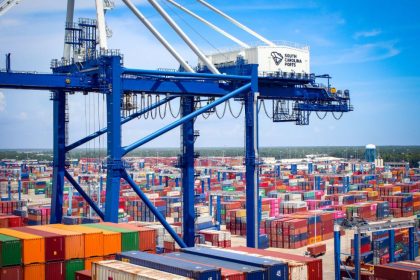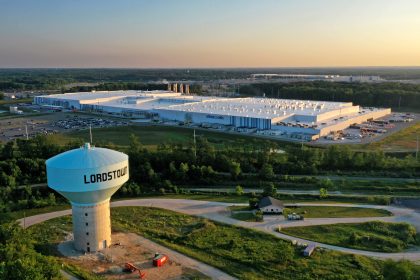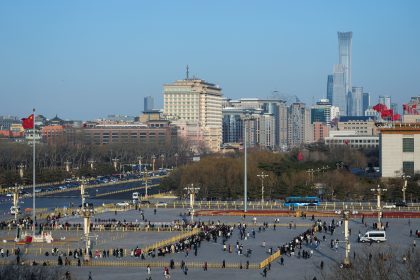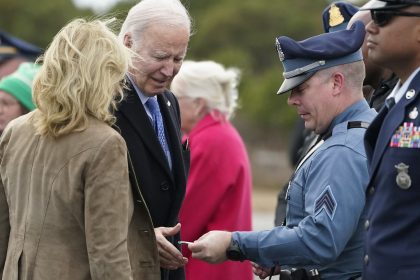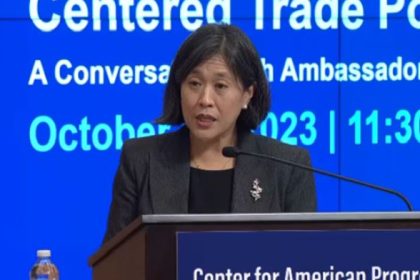‘Work on This Agreement is Never Going to be Finished,’ Tai Says of USMCA
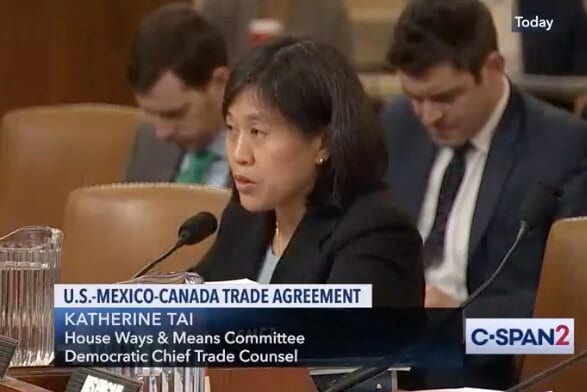
WASHINGTON — At the one-year anniversary of the USMCA trade agreement coming into force, trade representatives from the United States, Mexico, and Canada are patting themselves on the back for a job well done. They have good reason, as the treaty happened during a challenging time for all three economies in a global pandemic and contains 21st-century upgrades that reduce frictions in trade. Still, Katherine Tai, the U.S. Trade Representative, says “working on this agreement is never going to be finished.”
At a discussion of lessons learned from the first year of USMCA at the non-profit Wilson Center, representatives from all three countries identified how, as Mary Ng, minister of Small Business, Export Promotion and International Trade for Canada said, the “framework of the New NAFTA helps us… to become the most competitive region in the world.”
Like the old agreement, NAFTA, which was set in place in 1994, USMCA ensures the prosperity and cooperation of all three countries, but it modernizes the agreement and makes specific changes to digital trade, intellectual property provisions, small and medium enterprises, and labor and environmental practices, among other amendments. It also has mechanisms for regulating compliance and requires an overall periodic mandatory review.
“No other free trade agreement has been updated in this fashion,” said Wilson Center CEO Ambassador Mark Green. “All three governments should be commended for their vision and their willingness to take on the risks of renegotiation with no guarantee of success.”
“What we have done is set the course for us to work together in the years to come,” said Ng.
And as the pandemic has reinforced the deeply interconnected nature of societies, USMCA has proven its importance, especially in near-shoring crucial sectors and supply chains, and helping each of the three countries to face the challenges of the pandemic to their competitive advantage.
“Yes, the pandemic has been a real curveball, but we are here for each other,” said Tai, calling USMCA “an inclusive process [which] can lead to a more inclusive outcome” and “the beginning of the trajectory for a new generation of trade agreements.”
But while she said renegotiating USMCA was about “commit[ing] to advancing a positive economic agenda that commits to… pursue negotiations that raise standards and that promote a race to the top,” she also admitted that USMCA was a continual work in progress.
Shared priorities for collaboration in the year ahead include creating more balanced, reciprocal trade that supports high-paying jobs to grow the North American economy along long-established and deeply integrated supply chains. And in addition to mutual economic prosperity and raising the standard of living for all, a goal of USMCA is to offer reliability that helps entrepreneurs to innovate and adapt.
“By working hard in each of our countries to implement the ‘New NAFTA’, we’re sending a message to our workers,” said Ng, “that we will lead the world in a greener, safer, and more [secure] economic recovery.”
There is much to be celebrated at the first anniversary of the implementation of USMCA, but Tai warned that the work continues.
“These agreements are about relationships,” she said, “and relationships are dynamic just as economies are dynamic.”

















